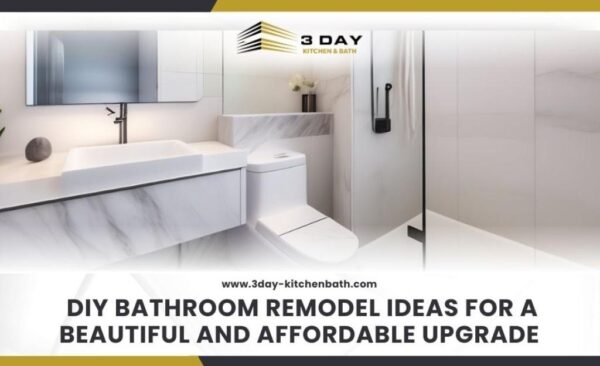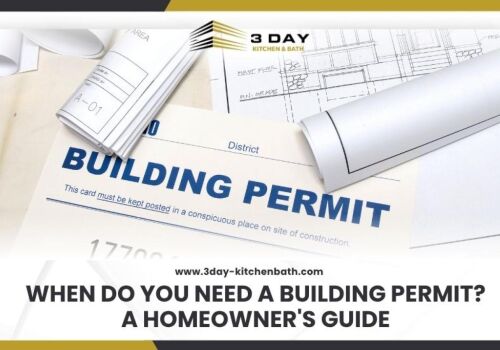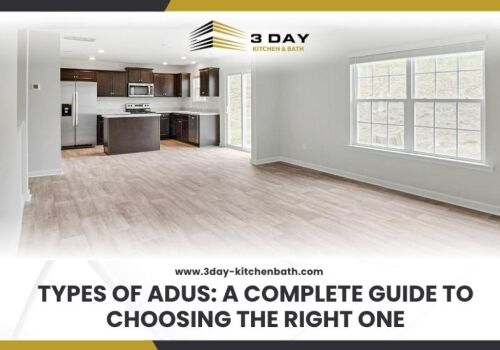A DIY bathroom remodel can transform your outdated bathroom into a beautiful, functional space. By doing it yourself, you can save money and customize your bathroom to match your style. This guide will help you plan, execute, and finish your bathroom remodel, making the process smooth and enjoyable.
- Planning Your DIY Bathroom Remodel
- Setting Goals and Budget
- Gathering Inspiration and Materials
- Step-by-Step Guide to DIY Bathroom Remodel
- Preparing Your Bathroom for Renovation
- Installing New Fixtures and Features
- Cost-Saving Tips for DIY Bathroom Remodel
- Budget-Friendly Material Choices
- Utilizing Existing Resources
- Smart Shopping Tips
- Creative Design Ideas for Your Bathroom
- Popular Bathroom Styles
- Choosing Timeless Materials
- Personalizing Your Space
- Common Mistakes in DIY Bathroom Remodels
- Planning and Design Pitfalls
- Demolition and Construction Errors
- Installation and Finishing Mistakes
- Achieve Your Dream DIY Bathroom Remodel
- Frequently Asked Questions
- What is the average cost of a DIY bathroom remodel?
- How long does a DIY bathroom remodel take?
- What are the essential tools needed for a DIY bathroom remodel?
- How can I save money on a DIY bathroom remodel?
- What are common mistakes to avoid in a DIY bathroom remodel?
- Start Your DIY Bathroom Remodel Today
Planning Your DIY Bathroom Remodel
Planning is crucial for a successful DIY bathroom remodel. It helps you define your goals, set a budget, and gather inspiration.
Setting Goals and Budget
Setting clear goals and a budget is the first step in your remodel. It ensures you stay on track and avoid unnecessary expenses.
- Define Your Vision: Decide what you want to achieve with your remodel. Are you updating fixtures, adding storage, or completely redoing the space?
- Set a Budget: Determine how much you can spend. Factor in costs for materials, tools, and any professional help you might need.
- Create a Timeline: Plan a realistic timeline to complete each remodel phase.
Gathering Inspiration and Materials
Finding inspiration and gathering materials will guide your project and help you make informed choices.
- Find Design Ideas: Look for bathroom styles that appeal to you. Websites, magazines, and home improvement stores are great places to start.
- List Essential Tools and Materials: Identify your needed tools and materials. This includes tiles, paint, fixtures, safety gear, and specialized tools like a wet-dry Shop-Vac and cordless drill.
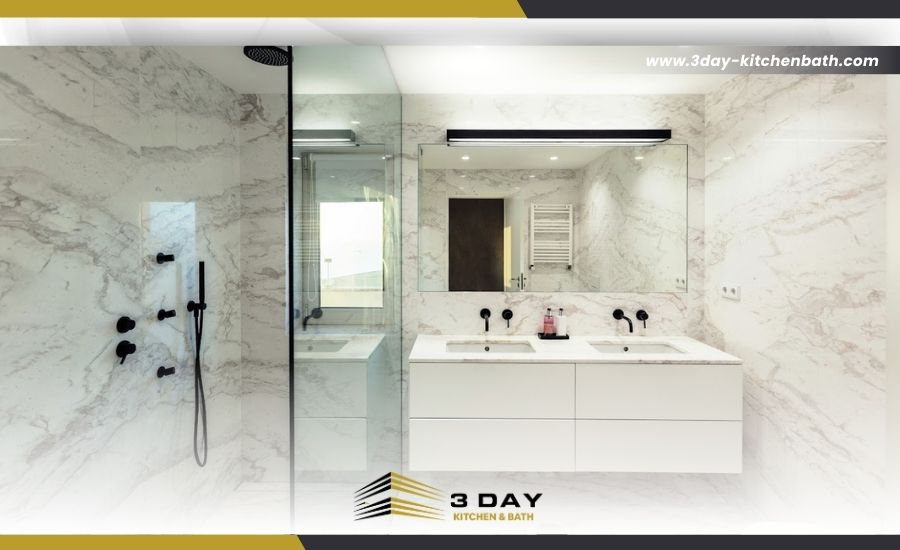
Step-by-Step Guide to DIY Bathroom Remodel
Following a step-by-step guide ensures you cover all aspects of the remodel, from demolition to final touches.
Preparing Your Bathroom for Renovation
Preparation is key to a smooth renovation. This involves careful demolition and ensuring safety.
- Safety Precautions: Wear safety gear like masks, gloves, and goggles. Turn off the water supply and cover drains to prevent debris from clogging pipes.
- Removing Old Fixtures and Materials: Start by removing old fixtures such as sinks, toilets, and cabinets. Carefully remove tiles and drywall if necessary, ensuring no damage to underlying structures.
Installing New Fixtures and Features
Installing new fixtures brings your bathroom remodel to life. It’s essential to choose quality materials and follow installation guidelines.
- Choosing and Installing a New Shower or Tub: Select a shower or tub that fits your design and space. Ensure proper installation to prevent leaks and water damage.
- Laying New Flooring Options: Choose durable and waterproof flooring like tiles or vinyl. Follow a grid pattern to lay tiles evenly.
Cost-Saving Tips for DIY Bathroom Remodel
Remodeling your bathroom doesn't have to break the bank. There are many ways to save money while achieving a beautiful result.
Budget-Friendly Material Choices
Choosing affordable materials can significantly reduce costs without sacrificing quality.
- Using Durable and Affordable Materials: Opt for materials like ceramic tiles and laminate flooring, which offer durability and aesthetic appeal at a lower cost.
- Refinishing Existing Fixtures: Instead of buying new fixtures, consider refinishing your current ones. This can give them a fresh look at a fraction of the cost.
Utilizing Existing Resources
Using what you already have can help you save money and reduce waste.
- Reusing Materials from Other Projects: Look around your home for leftover materials from previous projects. These can be repurposed in your bathroom remodel.
- Borrowing or Renting Tools: Instead of buying tools, consider borrowing from friends or renting from a local home improvement store.
Smart Shopping Tips
Being a savvy shopper can help you find great deals and stretch your budget further.
- Finding Affordable Materials and Tools: Check out discount stores, online marketplaces, and second-hand shops for deals on materials and tools.
- Seasonal Sales and Discounts: Keep an eye out for sales and discounts, especially during holiday seasons and clearance events.
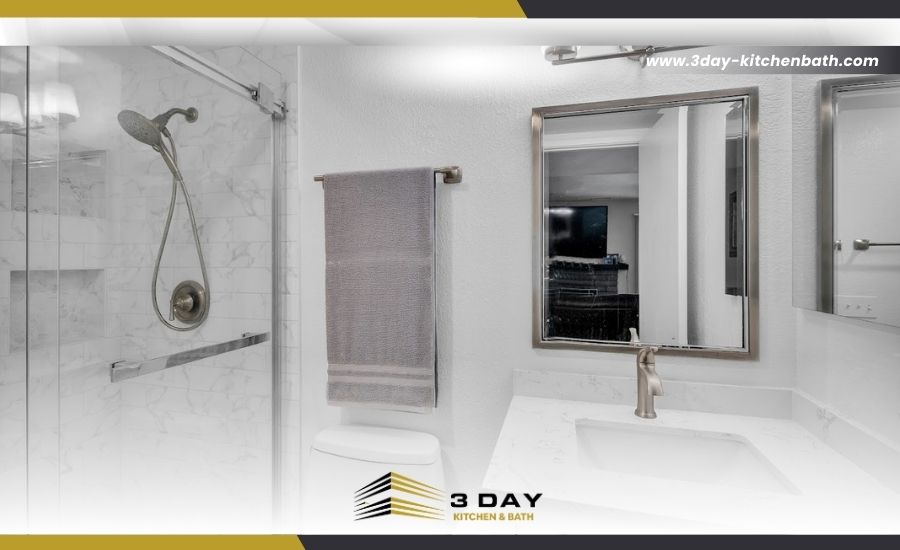
Creative Design Ideas for Your Bathroom
Creative design ideas can turn your bathroom into a stylish and functional space. By exploring popular styles, choosing timeless materials, and adding personal touches, you can create a bathroom that reflects your taste and meets your needs.
Popular Bathroom Styles
Exploring different bathroom styles can help you find the perfect look for your remodel. Here are some popular styles to consider:
- Modern: Clean lines, neutral colors, and minimalist fixtures define a modern bathroom. Use sleek materials like glass and metal for a contemporary feel.
- Farmhouse: This style features rustic elements like wooden vanities, shiplap walls, and vintage fixtures. Neutral colors and natural materials add to the charm.
- Boho: Bohemian bathrooms mix colors, patterns, and textures for a vibrant look. Use bold tiles, eclectic decor, and plants to create a lively space.
Choosing Timeless Materials
Selecting timeless materials ensures your bathroom remains stylish and functional for years to come. Here are some materials to consider:
- Tile: Ceramic and porcelain tiles are durable and available in various styles. Subway tiles and mosaic patterns are classic choices.
- Countertops: Quartz and granite are long-lasting and resistant to stains and scratches. They also add a touch of luxury.
- Fixtures: Stainless steel and brushed nickel fixtures are both durable and versatile, fitting well with various styles.
Personalizing Your Space
Adding personal touches makes your bathroom unique and tailored to your preferences. Here are some ideas:
- Unique Decor: Incorporate artwork, decorative mirrors, and unique storage solutions. These items add personality and style.
- Color Schemes: Choose colors that reflect your taste. Soft blues and greens create a calming atmosphere, while bold colors make a statement.
- Patterns and Textures: Mix and match patterns and textures with tiles, rugs, and accessories to add depth and interest to your bathroom.
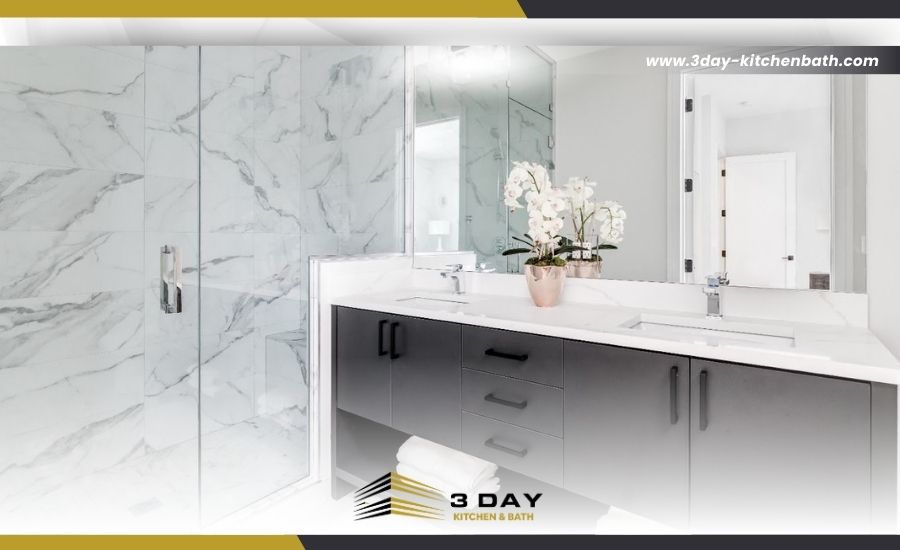
Common Mistakes in DIY Bathroom Remodels
Avoiding common mistakes can make your DIY bathroom remodel smoother and more successful. Being aware of potential pitfalls can save you time and money.
Planning and Design Pitfalls
Proper planning and design are crucial for a successful remodel. Avoid these common mistakes:
- Underestimating Costs and Time: Be realistic about your budget and timeline. Unexpected expenses and delays can derail your project.
- Overlooking Storage and Utility Needs: Ensure you include enough storage for toiletries and towels. Plan for proper lighting and ventilation.
Demolition and Construction Errors
Careful demolition and construction are essential to avoid costly mistakes. Watch out for these errors:
- Ignoring Safety Protocols: Always wear safety gear and follow safety guidelines. This prevents injuries and accidents.
- Improper Removal of Fixtures and Materials: Remove fixtures and materials carefully to avoid damaging plumbing, wiring, or structural elements.
Installation and Finishing Mistakes
The installation and finishing phases require attention to detail. Avoid these common issues:
- Skipping Essential Waterproofing Steps: Proper waterproofing prevents mold and water damage. Use waterproof membranes and sealants in wet areas.
- Misaligning Tiles and Fixtures: Ensure tiles and fixtures are correctly aligned. Crooked tiles and misaligned fixtures can affect the overall look and functionality of your bathroom.
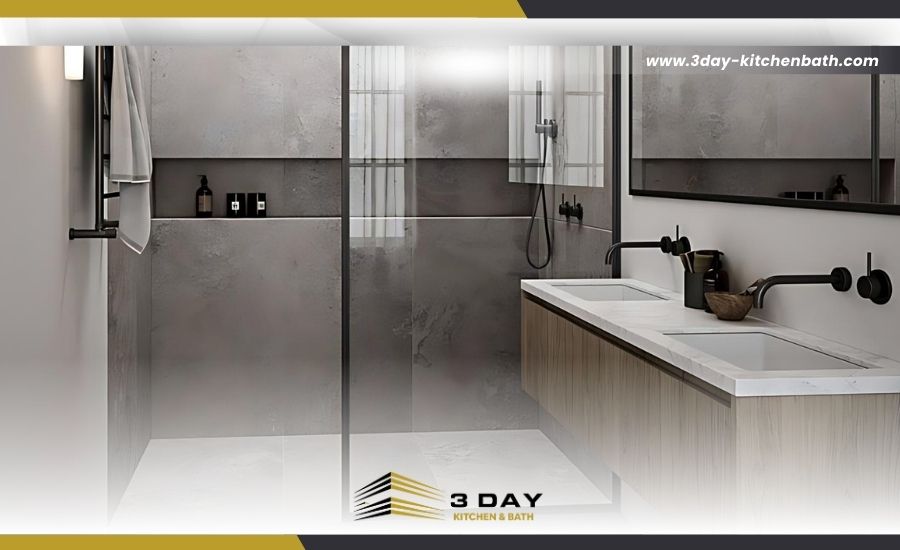
Achieve Your Dream DIY Bathroom Remodel
A DIY bathroom remodel can transform your space into a beautiful and functional room. By planning carefully, choosing budget-friendly materials, and following a step-by-step guide, you can achieve professional-quality results without breaking the bank.
Avoid common mistakes by paying attention to details and following best practices. With creativity and effort, you can create a bathroom that reflects your style and meets your needs, making the entire process rewarding and enjoyable.
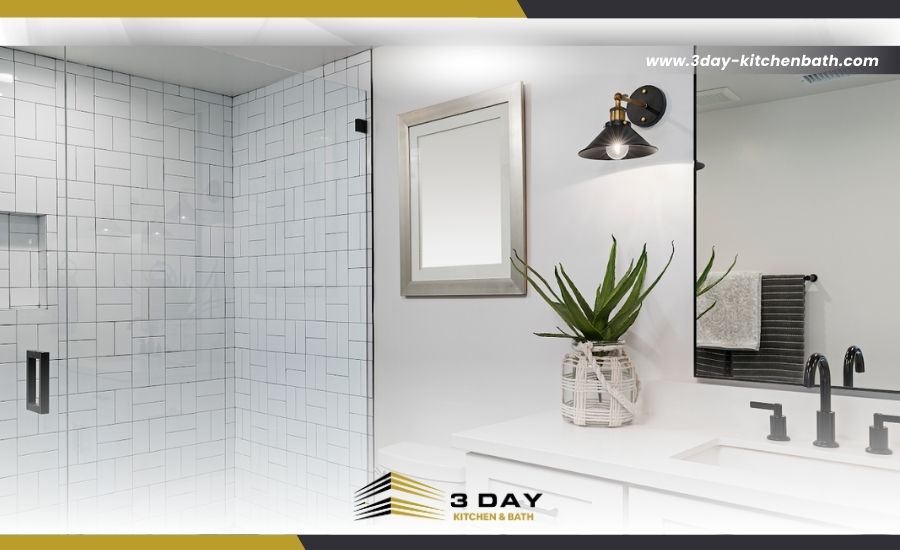
Frequently Asked Questions
What is the average cost of a DIY bathroom remodel?
The average cost of a DIY bathroom remodel can range from $2,000 to $5,000. This cost includes materials, tools, and any minor professional help you might need. By doing the work yourself, you can save on labor costs, which typically make up a significant portion of professional remodel expenses.
How long does a DIY bathroom remodel take?
A DIY bathroom remodel can take anywhere from two weeks to three months, depending on the scope of the project and your experience level. Small updates may only take a couple of weeks, while a full remodel involving demolition and major installations can take several months to complete.
What are the essential tools needed for a DIY bathroom remodel?
Essential tools for a DIY bathroom remodel include a power drill, tile saw, wet-dry Shop-Vac, caulking gun, tape measure, safety gear (masks, gloves, goggles), and basic hand tools like hammers and screwdrivers. Renting specialized tools can also be cost-effective for specific tasks.
How can I save money on a DIY bathroom remodel?
To save money, use budget-friendly materials, repurpose existing fixtures, and shop for discounts. Consider refinishing instead of replacing fixtures and borrowing or renting tools instead of purchasing them. Planning and sticking to a budget also helps control costs.
What are common mistakes to avoid in a DIY bathroom remodel?
Common mistakes include underestimating costs and time, skipping waterproofing steps, and ignoring safety protocols. Proper planning, careful demolition, and attention to detail during installation can help avoid these pitfalls and ensure a successful remodel.
Start Your DIY Bathroom Remodel Today
Ready to transform your bathroom? Follow our comprehensive guide to create a beautiful, affordable space. Call us today for all your remodeling needs.

